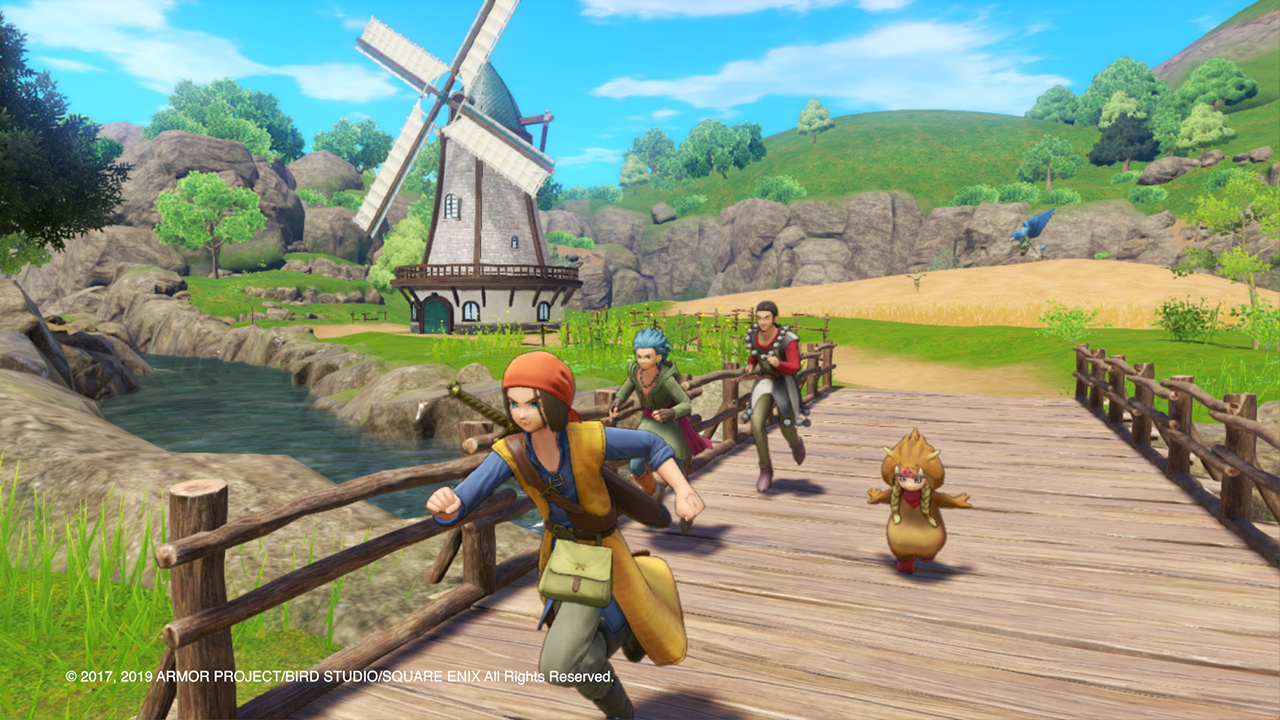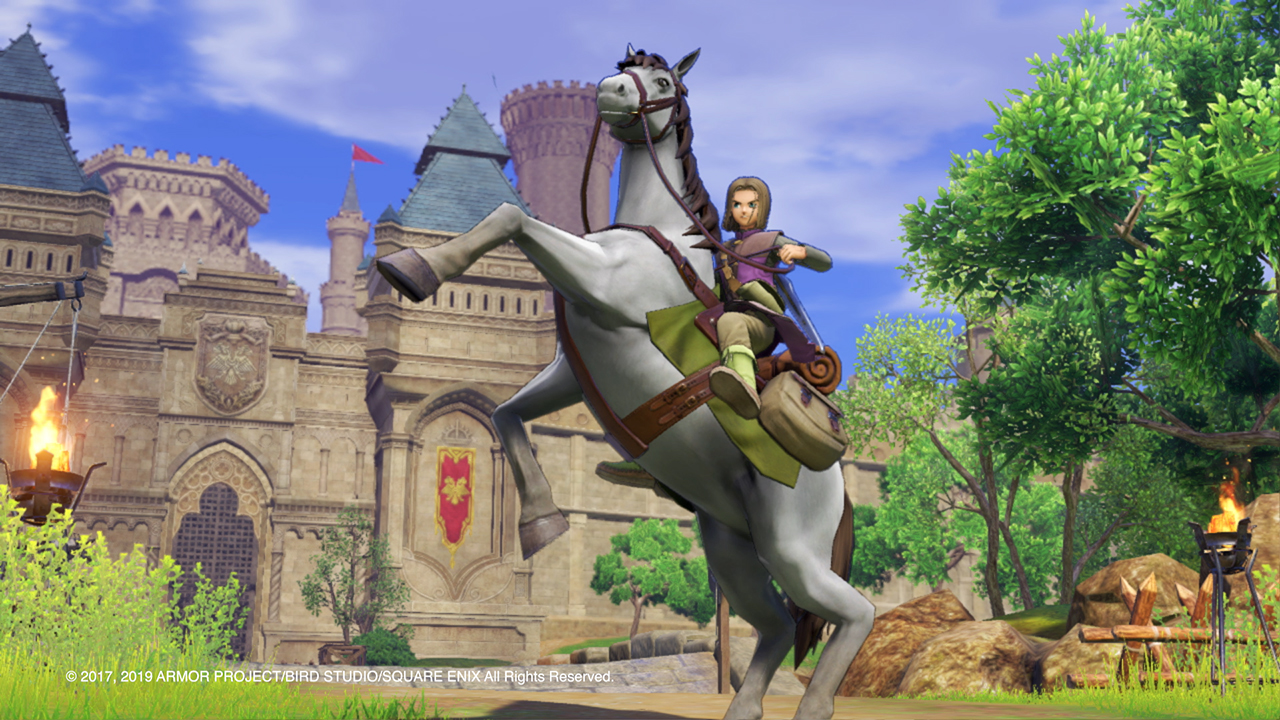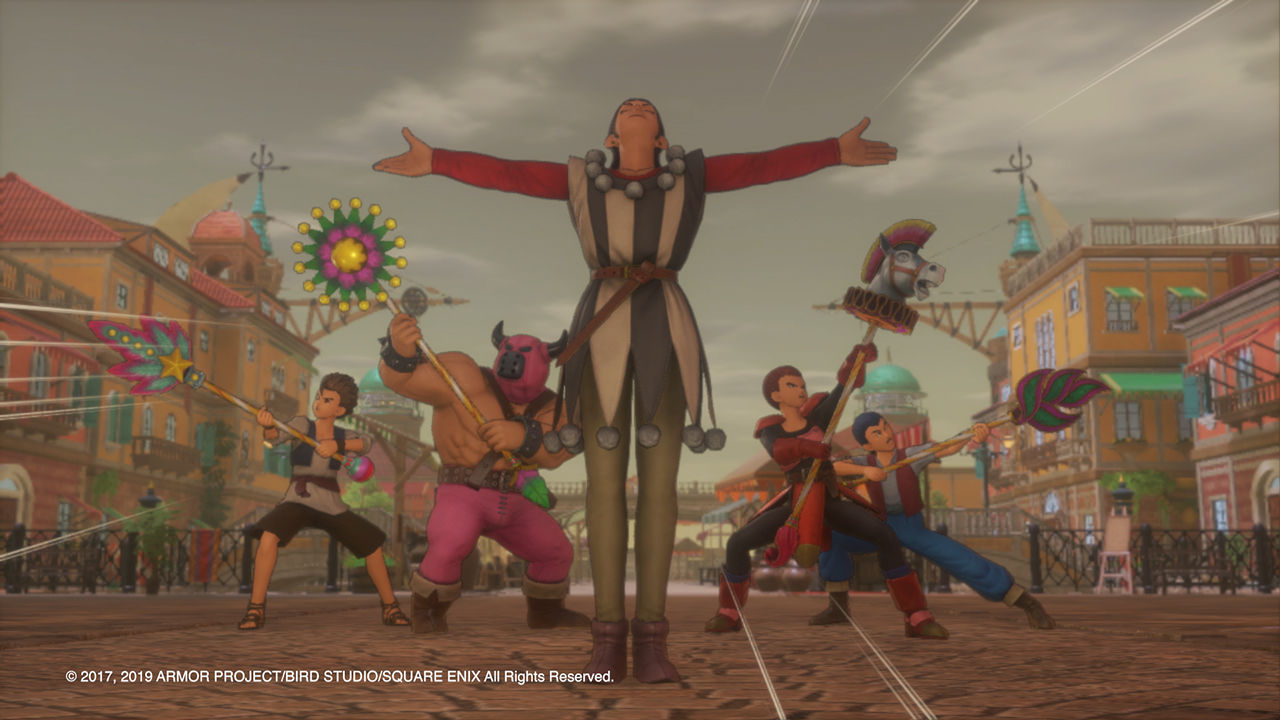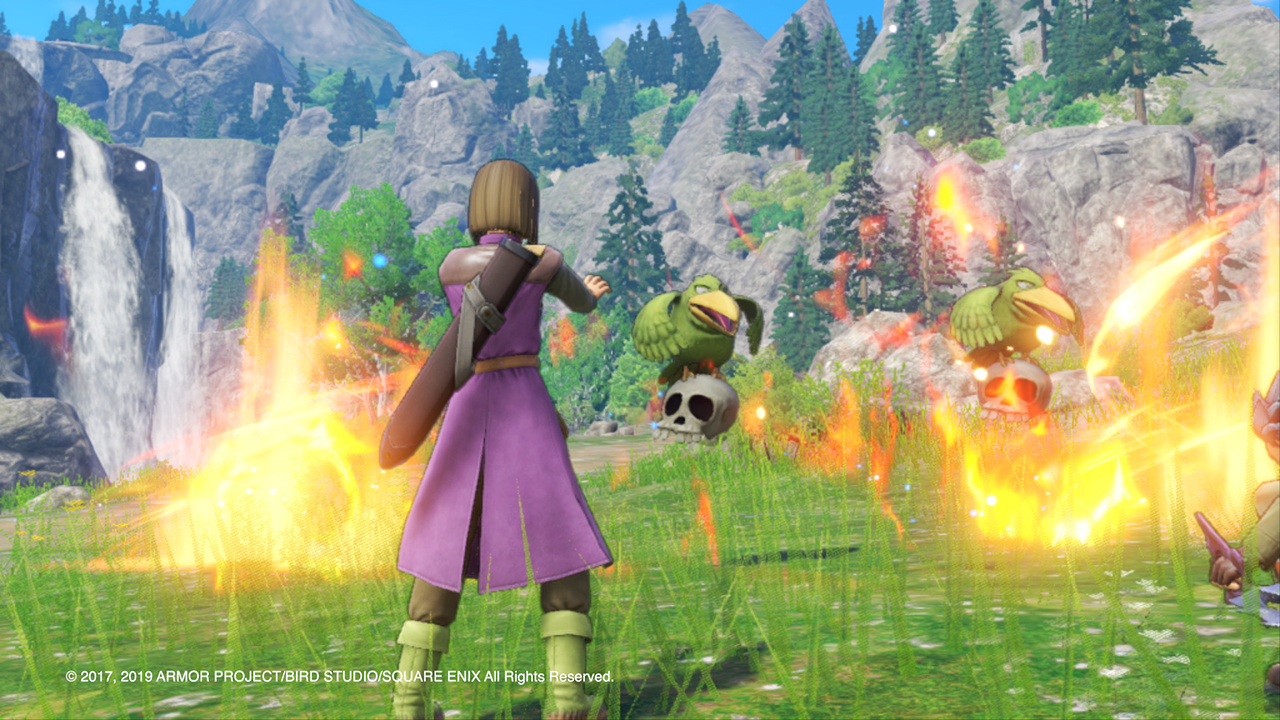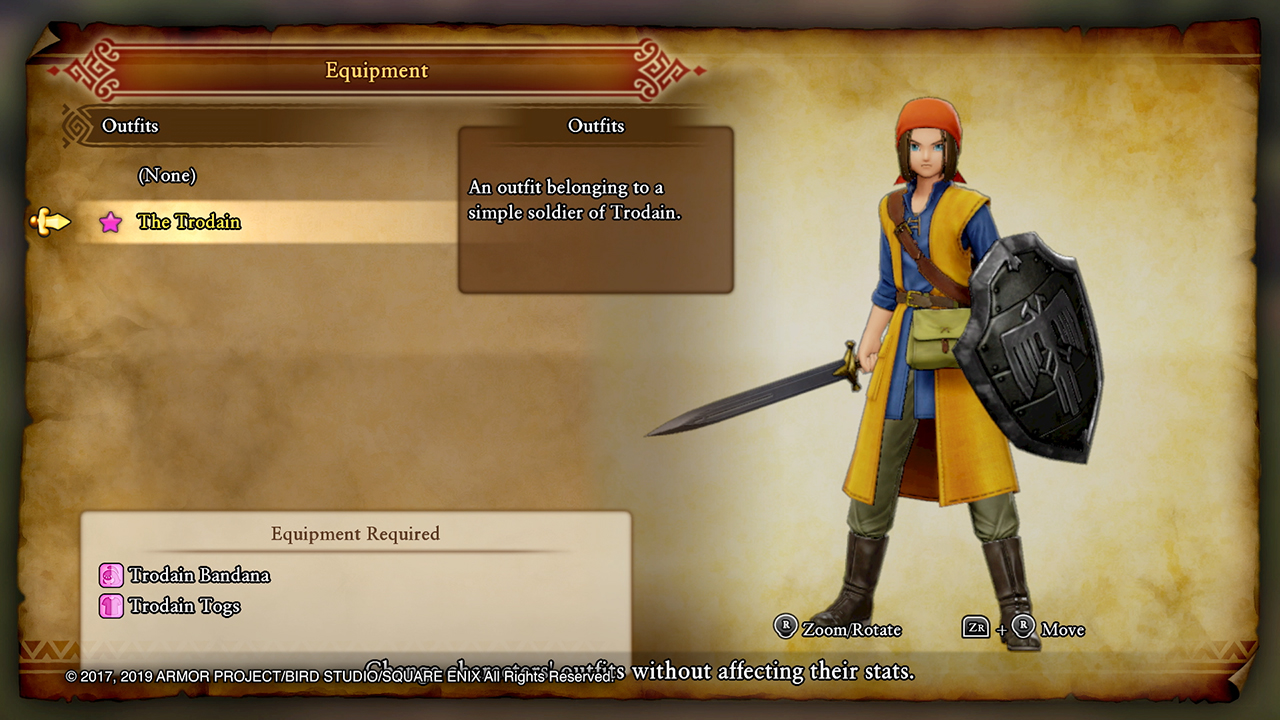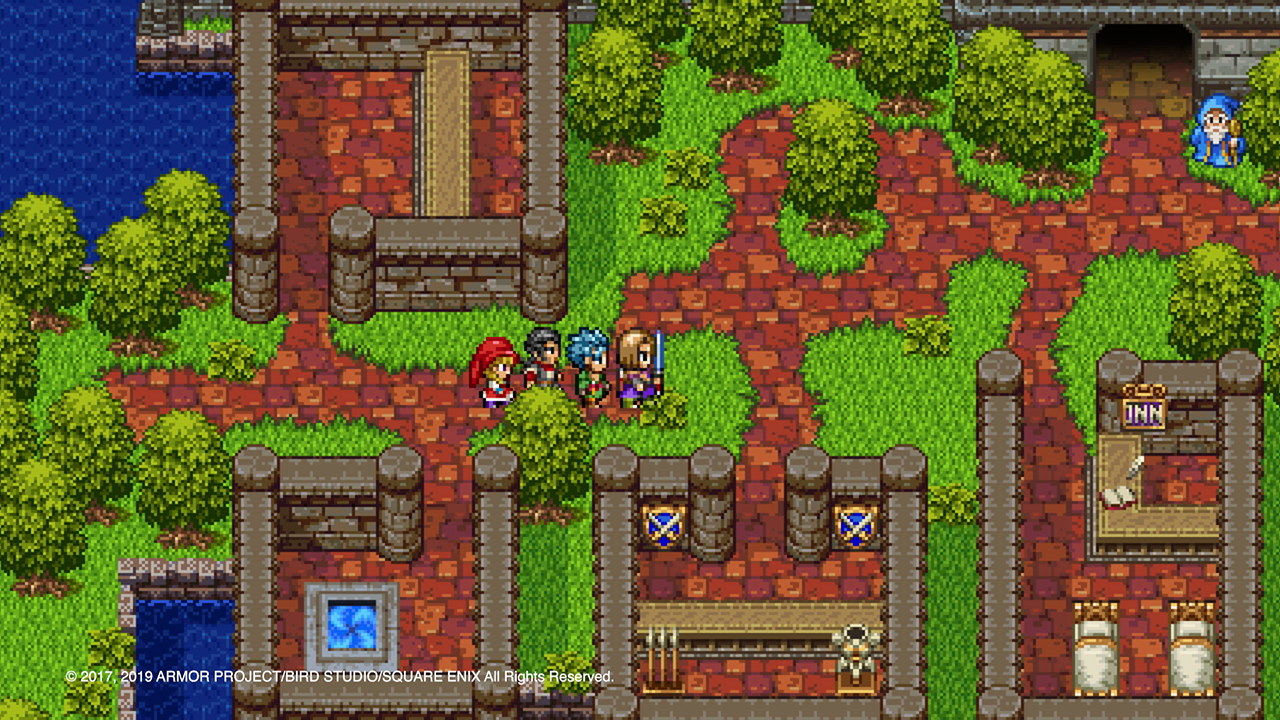A quest you won't want to miss, darlings.
I have never before played a Dragon Quest game. I see now that this is a mistake. DRAGON QUEST XI S: Echoes of an Elusive Age – Definitive Edition (henceforth just Dragon Quest XI, okay?) is such a robust, charming, and engaging JRPG that it currently stands as my favorite game of 2019.
There are many reasons for this, most of which I’ll cover in this review. I want to say upfront, however, that Dragon Quest XI’s best feature is that it just never stops trying to entertain you.
Unlike many JRPGs, it’s never content to just sit back and let you mill about to level grind or explore. Yes, all role-playing games provide new people to meet and new quests to pick up in every town you visit, but Dragon Quest XI wants to make sure that most everyone is there for your enjoyment. There’s a town where everyone speaks in haiku. There are dancers who invite you to come watch them at a specific time even though doing so does nothing to aid in your quest. There are bad puns and clever references throughout. The Picture of Dorian Gray? Seriously?
And the accents. I’m not sure how accurate any of the obviously derivative accents are in this game, but everything is so well-acted that you can’t help but smile at the outrageousness of it all.
This sense of levity carries over to the playable characters, too. Each member of your party carries a quirky charm that is likely to influence whether you use him or her in combat. I don’t know if the flamboyant Sylvando was necessarily one of my best fighters, but he’s my favorite JRPG character since Xenoblade Chronicles 2’s Zeke (and his Eye of Shining Justice), so he only left my party of four combatants when the story required him to.
“But Kirk,” you may be saying, “you’re four paragraphs into this review and haven’t even told us what the game is about.” Okay, that’s fair, but I purposely started with the game’s tone because it’s the tone that sets it apart from so much of the competition. Yes, there’s a big story about a dark spirit that can bring about the end of Erdrea and how you, as the Luminary, have been chosen by the World Tree to save it. The trouble is that you have been accused by your kingdom of being the Dark Spawn who would in fact bring about this end, so you spend much of your time on the run with just your few companions at your side.
This story, however, it handled lightly and with a heavy amount of humor in its sidequests. That’s not to say the game doesn’t have its share of emotional impact and moments of tenderness, they’re just handled without the typical JRPG melodrama. And speaking of JRPG tropes, it’s a breath of fresh air to see that the church is actually on your side in this one instead of being responsible for the downfall of humanity. You save the game by praying at specified locations, and when the inevitable twist arrives it does so without the help of angry gods who are ready to destroy humanity for their general lack of disrespect.
All of this plays out in a story that generally pushes you from location to location, giving you a couple sidequests to complete along the way before you tackle the main objective there and move on. Sidequests can involve everything from delivering letters to executing a specific move against a monster to dressing up your party members in specific outfits. There’s sometimes too much back-and-forth travel involved, but they’re generally easy enough to complete. In fact, the lack of a significant challenge may be the game’s only real drawback. I was able to push through it without ever feeling that I needed to level grind, although I did take my time and battle most monsters between towns instead of riding my horse or whatever method the game provided.
I did this because battles don’t actively require your full attention. They’re turn-based, and you can control each of the up-to-four characters individually if you like. I never did. For minor skirmishes I had all the characters act on their own based on the basic commands I set (fight cautiously, all-out attack, focus on healing, that kind of thing). For boss battles I took full control over the protagonist (Hero, whom you may know from Super Smash Bros.) so I could slow things down when his turn came around and take the appropriate action, but it was always fine to leave the others on auto-pilot. And note that although you’re free to move your character around the battlefield, positioning has no effect on your attacks or defense.
Characters get their abilities from the weapons and armor you provide. Abilities can be enhanced by assigning skills as you gain experience. Weapons and armor are improved via the fun-size forge, a clever minigame in which you use recipes and materials you acquire throughout the game to literally hammer out better accessories. You’re mostly free to push your party members down a few different skill paths, and you can change their appearance based on some of the outfits you provide. Gamers will be happy to note that once you unlock a particular outfit you can keep the character in that outfit regardless of what armor he/she currently has equipped.
I also need to talk about the graphics here, as the vibrant approach adds tremendously to the general breeziness of the game. Everything from the town buildings to the material of the characters’ cloaks have a nice texture to them, and the landscapes are always bold and colorful. Animation is smooth in both exploration and combat, and the somewhat joke-y approach to the enemy designs eventually won me over. The character designs are based on the style of artist Akira Toriyama (of Dragon Ball and Chrono Trigger fame), so they’re bound to push the nostalgia buttons of many players.
Speaking of nostalgia, you’ll actually have the choice of toggling between 3D mode or a retro 2D mode while playing. That’s certainly a unique option, but I never messed with it. Having never played a Dragon Quest game before I had nothing to fondly recall by making this beautiful game look like it would have on a Game Boy Advance. That said, there is a component where the 2D approach is woven directly into the game: Tickington. You’ll unlock access to small, specific areas of this town throughout the game—each inspired by a different Dragon Quest game—and can play through them for nostalgia and, more importantly, items. This part is especially fun in handheld mode, but you’ll otherwise want to play this game on your TV.
All of this (and plenty more…this is a big game) add up to an exceptional adventure that may be a bit too light and breezy for more serious JRPG fans, but may also win over those new to the genre. Inventory, combat and levelling up are all accessible and easy to manage, the story moves at a brisk pace, and the visuals and soundtrack are wonderful. How could I have gone this far without mentioning the soundtrack, playable either in nostalgic synthesized mode or the glorious new symphonic mode performed by the Tokyo Metropolitan Symphony Orchestra? You may want to turn the latter down, though, as the default setting is quite loud.
Review: Dragon Quest XI S: Echoes of an Elusive Age – Definitive Edition (Nintendo Switch)
Great
If you haven’t made room in your crowded wish list for DRAGON QUEST XI S: Echoes of an Elusive Age, do so now. You don’t need to take my word that it’s one of most enjoyable Switch releases of the year, you can hit up the eShop for the demo and let the game’s first 10 hours speak for themselves.

